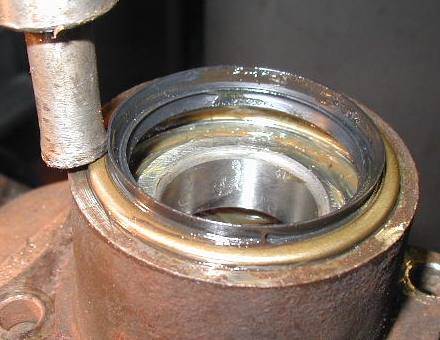(don't throw them in the bin just yet)
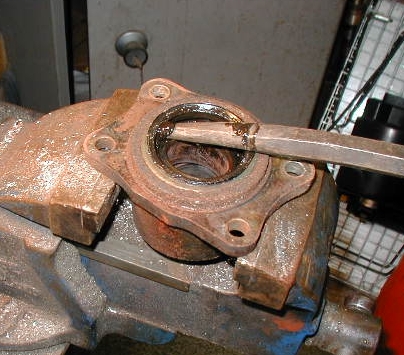
Note that the bearings don't actually back up to each other, but that there is a small shoulder between them.
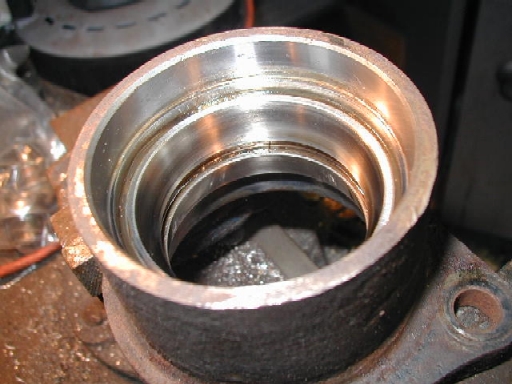
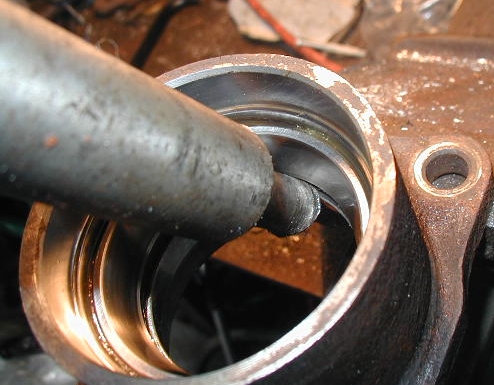
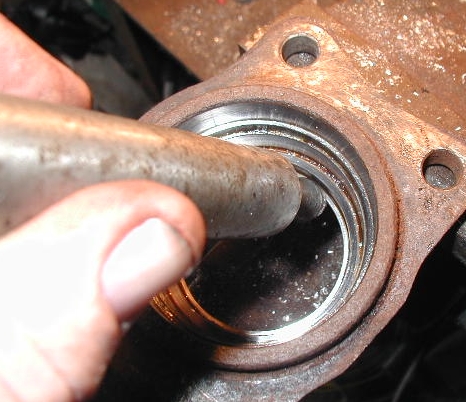
The 2 bearings are identical, as are the oil seals, but note the nuts! the LH threaded nut is the one with the little cuts out of the corners.
Some manufacturers have 2 different part numbers, one has a RH threaded nut, the other has a LH threaded nut, this manufacturer only has 1 part number, but gives you both nuts.
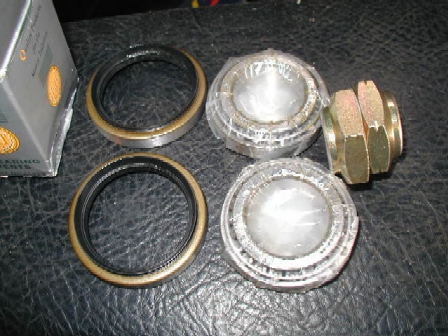
Now place the outer shell in position and, with the drift, start by gently tapping the shell into the hub, work all around the circumference of the bearing race, trying not to get it in cock-eyed. you will need to increase to strength of the 'taps' the further it goes home.
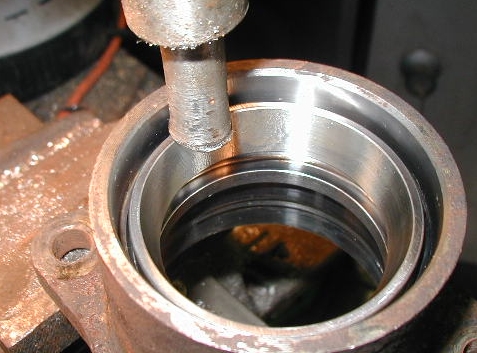
Here you can see that it's not yet up fully, there's still a gap, you can still see 'Japan' on the outer race.
As the shell gets very close to home, the top edge, where you are placing the drift, will go below a lip in the casting, be sure not to damage this lip, check each placement of the drift before you hit it.
The other outer race is identical to fit, don't forget to check that both of them are fully 'home'
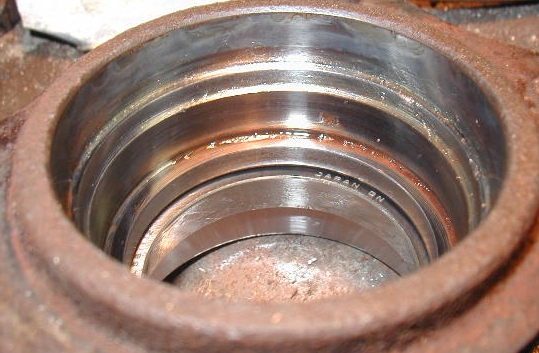
Now we will fit the oil seal. These can very easily be damaged, firstly, push it into place, you'll find that it will just 'hold' on the start chamfer. Don't start hitting the new oil seal, instead, put the old seal on it, and tap that. Be careful not to knock one side down too far, work around the circumference, tapping it down a bit at a time, keep it square.
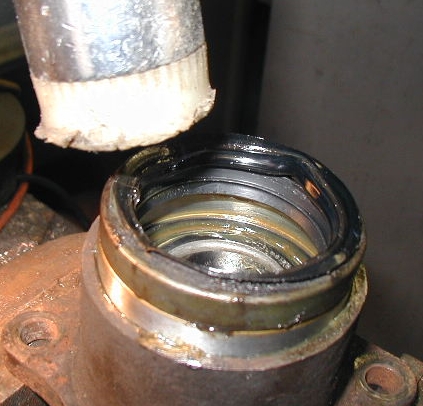
Now turn the hub over, grease up and drop in the other bearing, then fit that oil seal.
